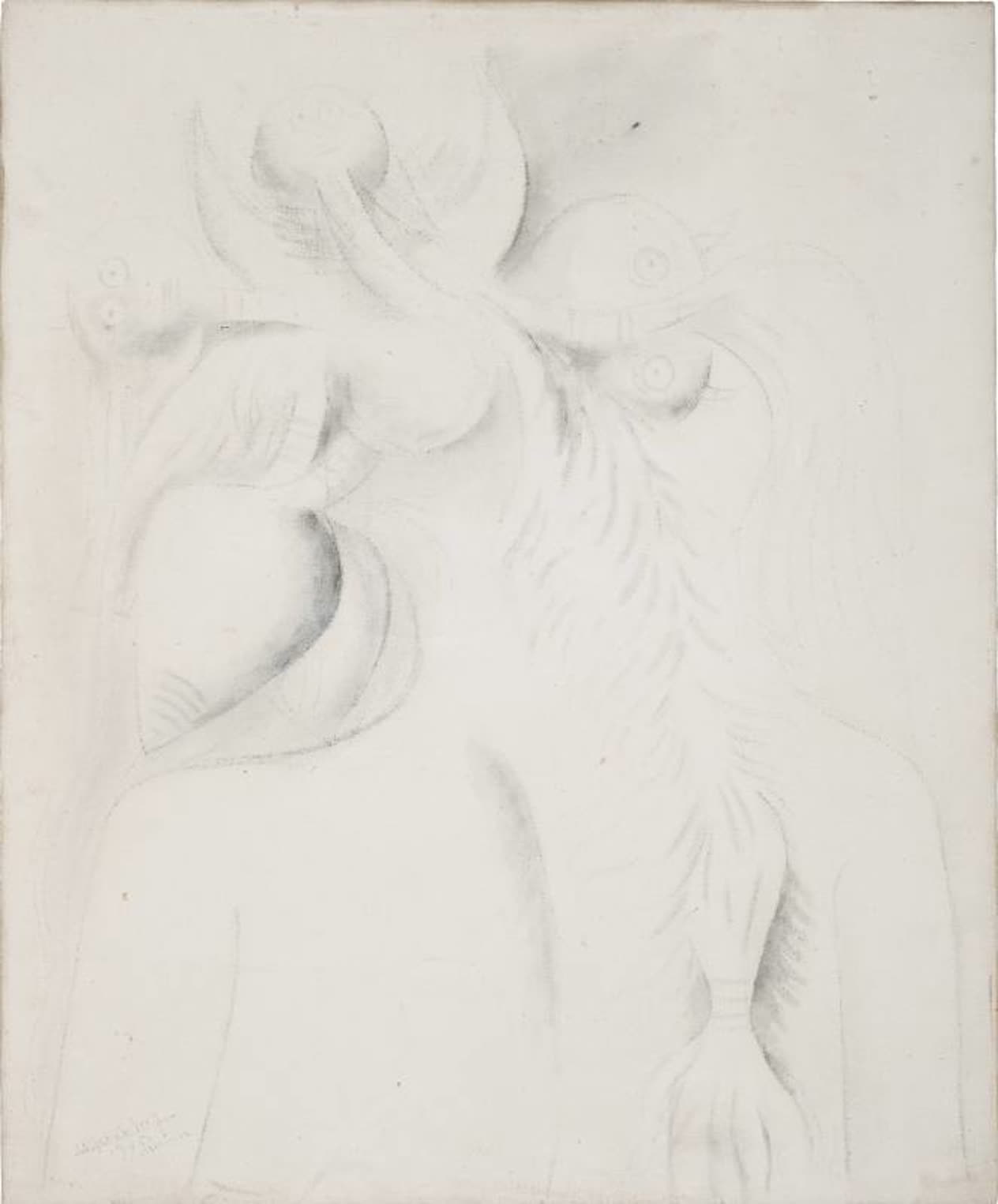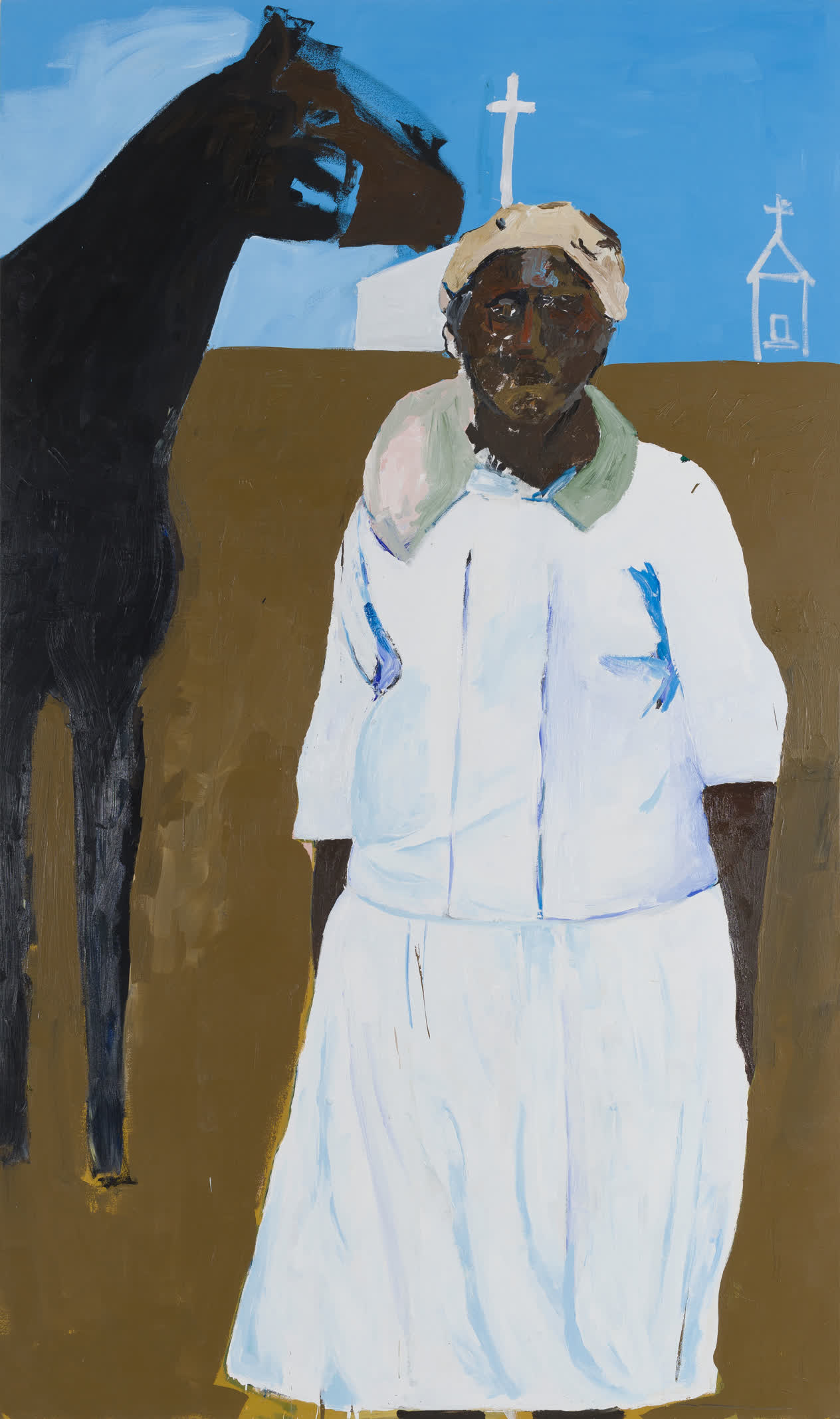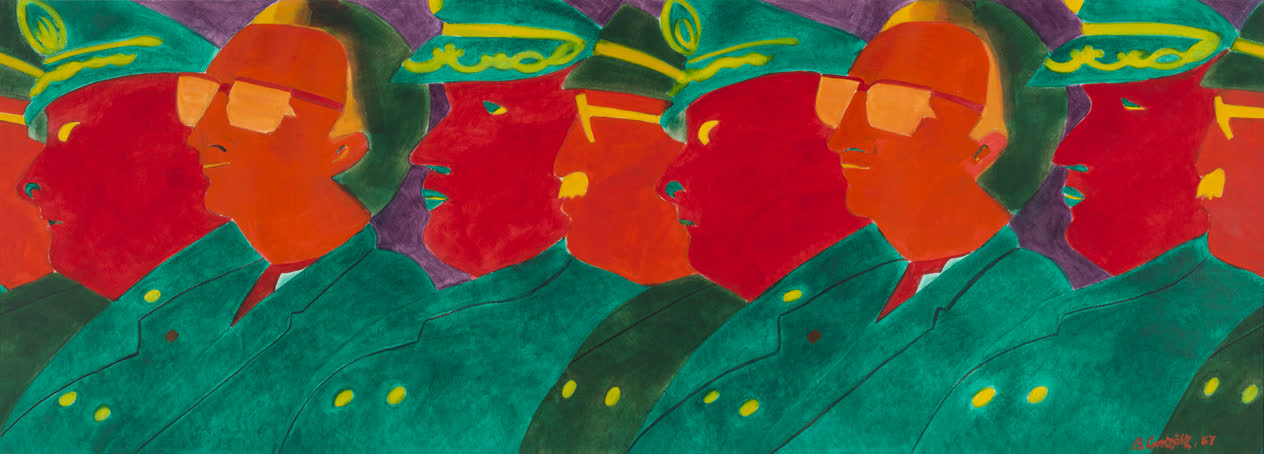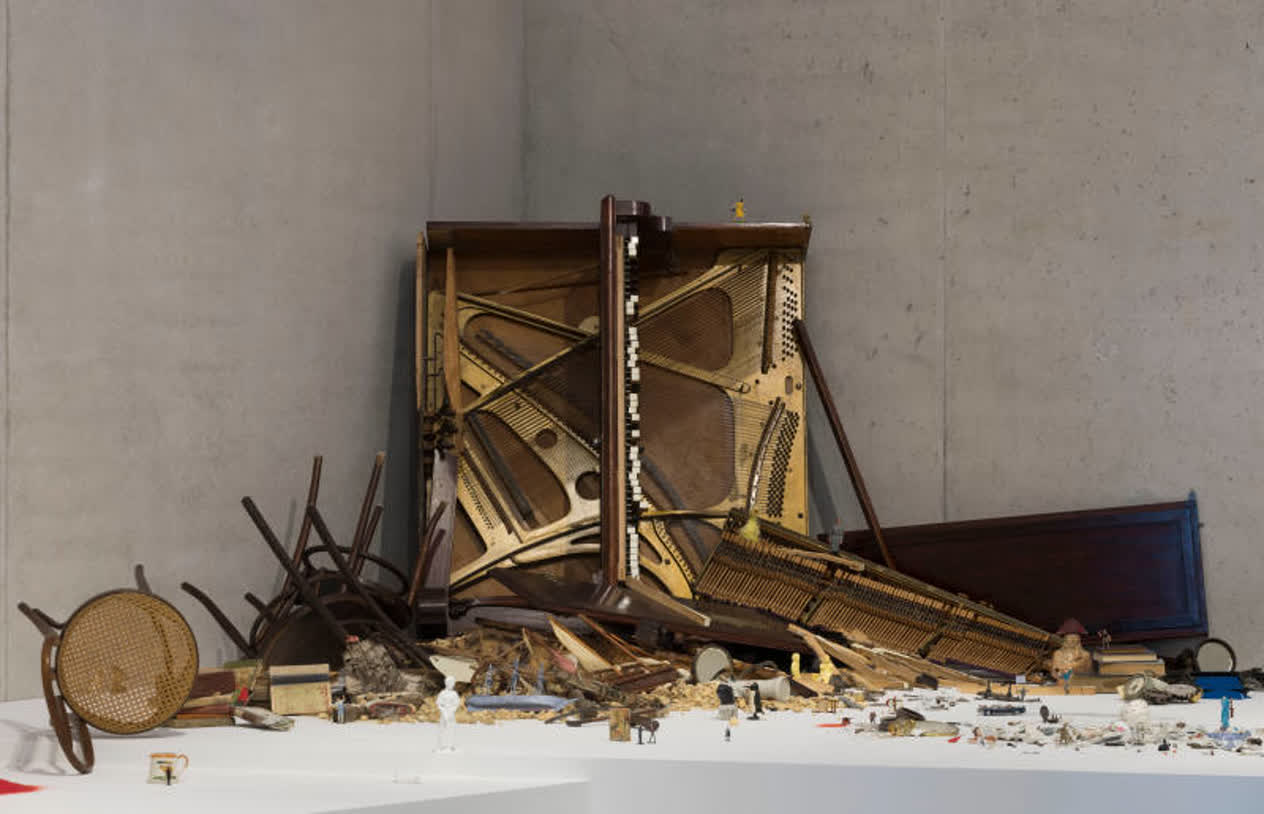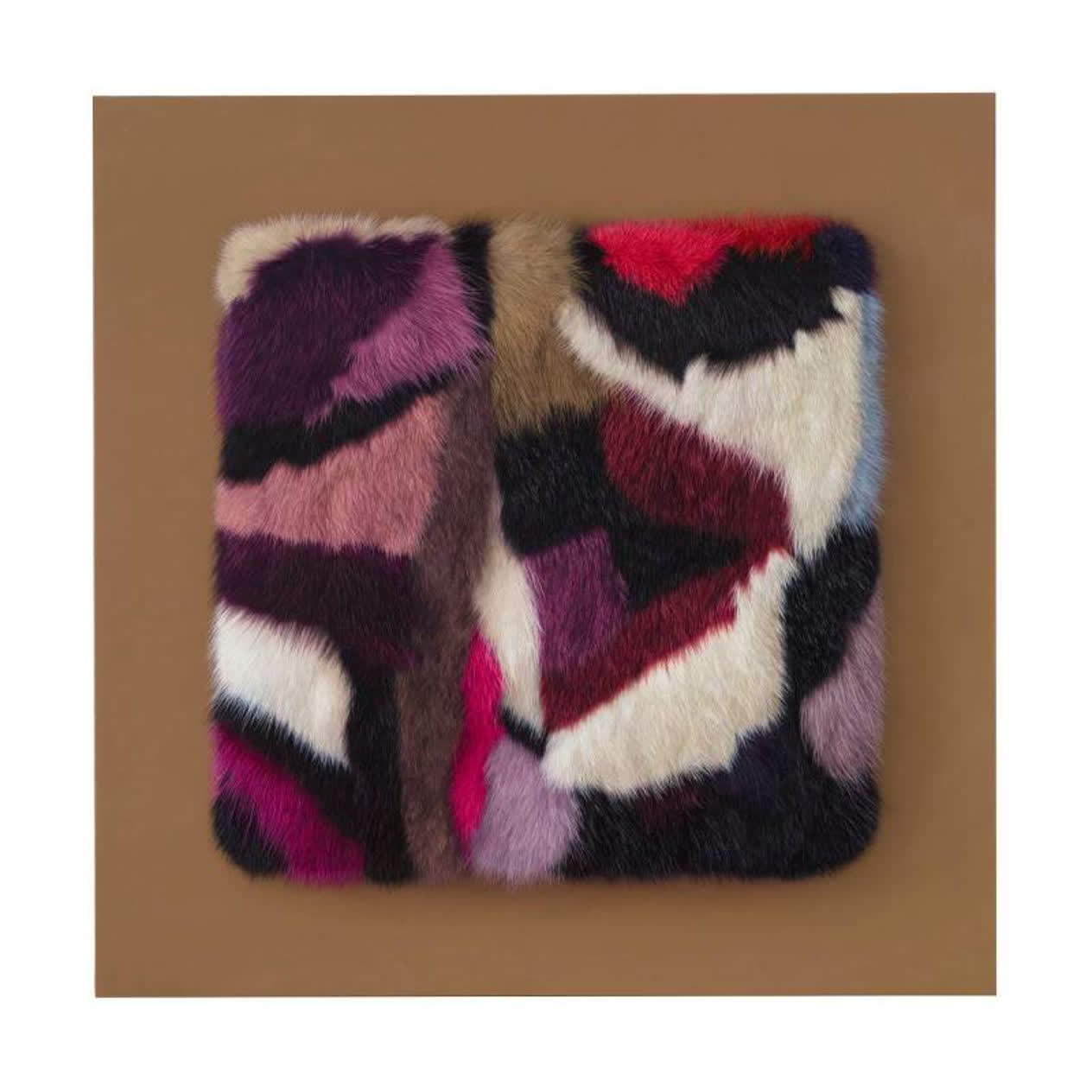George Segal Abraham’s Farewell to Ishmael 1987
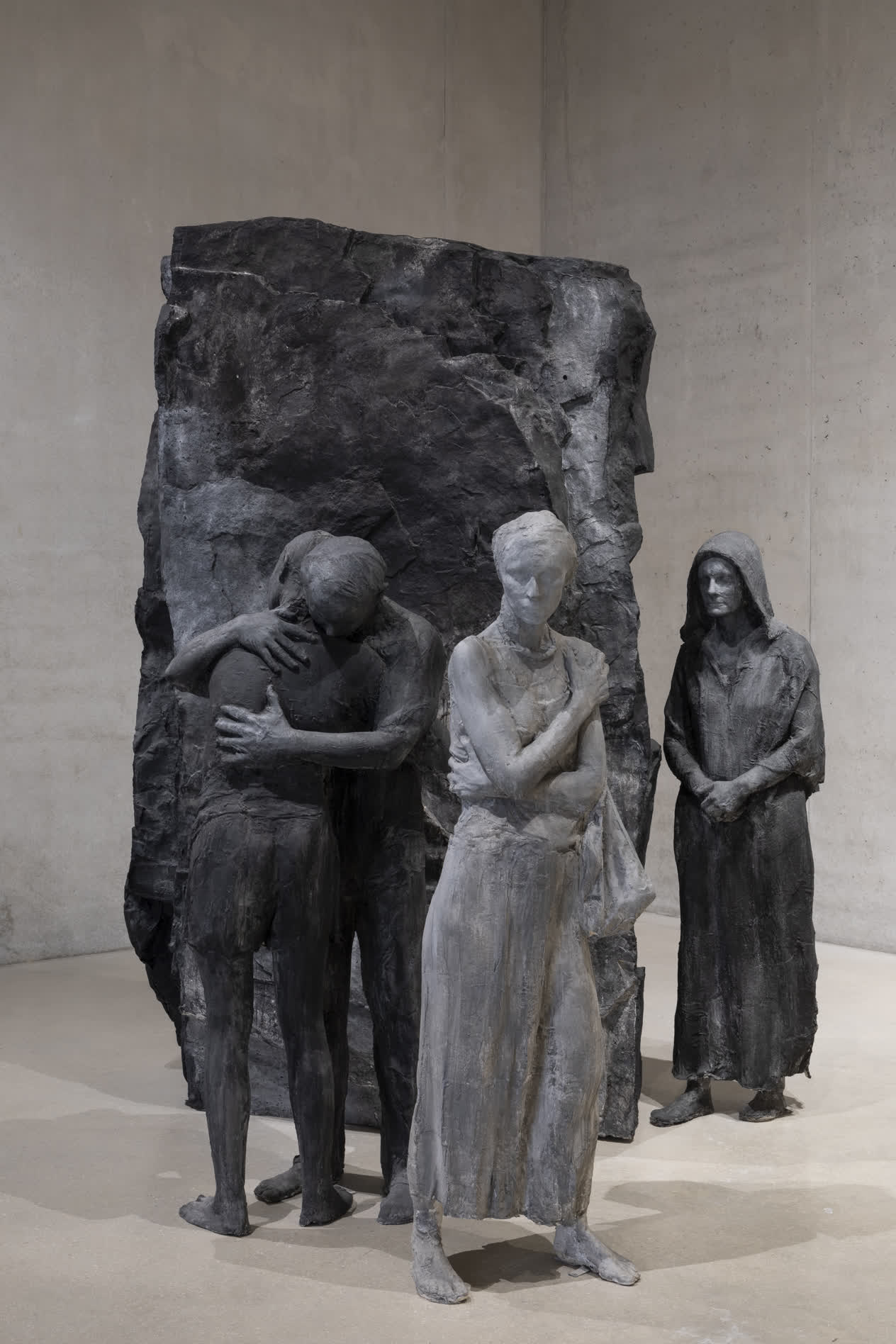
© Pérez Art Museum Miami

This work is a sculptural representation of a key episode in the Old Testament revolving around a dilemma faced by the Biblical patriarch Abraham. In this story, Abraham’s wife Sarah seeks to ensure the right of inheritance of her son Isaac by demanding that her husband expel his mistress Hagar and her first-born son from their home. After receiving divine promise of Hagar and Ishmael’s safety, Abraham reluctantly banishes them to the desert. George Segal cast the figures from real models, capturing a range of human emotions, from the father’s grief-stricken tenderness to Sarah’s rage and Hagar’s resigned acceptance. Segal’s choice of subject matter relates as much to the contemporary Arab-Israeli conflict as it does to ancient history: this narrative can be said to contain the Biblical roots of the split between Jews, the ostensible descendants of Isaac, and Muslims, who reputedly descend from the exiled Ishmael.
Identification
Title
Abraham’s Farewell to Ishmael
Production Date
1987
Object Number
2001.10a-d
Credit Line
Collection Pérez Art Museum Miami, gift of The George and Helen Segal Foundation
Copyright
© Pérez Art Museum Miami
https://www.pamm.org/en/artwork/2001.10a-d
Copy artwork link
Physical Qualities
Medium
Painted plaster
Dimensions
Dimensions variable
Visual Description
Abraham’s Farewell to Ishmael by George Segal is a sculpture from 1987. It is made of painted plaster and measures roughly nine feet tall by four-and-a half feet wide and four-and-a half feet deep.
The sculpture references the biblical story of Abraham and his banishing of his son Ishmael.
The sculpture depicts four people dressed in contemporary clothing. Two of the people are in an embrace. Both appear to be male, implying they are Abraham and Ishmael. In front of them is a woman wearing a dress. She wraps her arms around herself and has a small bag hanging off her left forearm. Behind her and the two embraced men, a large rock-like monolithic structure looms over them. Behind the rock structure is another woman. She is wearing a long, hooded robe and rests her hands in front of her. She appears to be looking at the scene unfolding in front of her, peering from behind the rock.
The figures and rock structure are all painted in a monochromatic palette of greys and blacks. The three figures and rock behind the lone woman holding herself are all painted dark grey and black while the hooded woman is painted a lighter shade of grey. The color of the figures along with their texture resembles charcoal.






